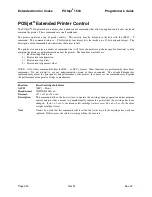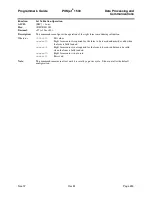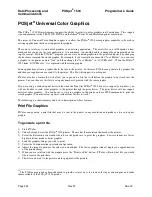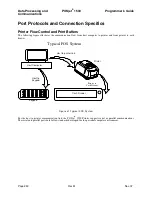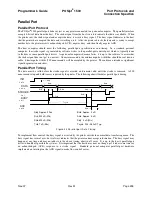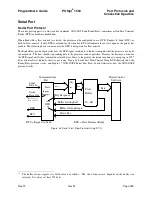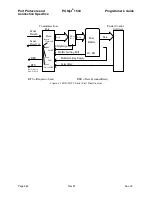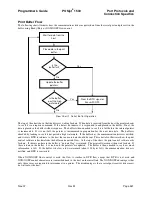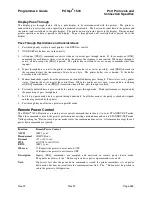
Data Processing and
POSjet
®
1500
Programmer's Guide
Communications
Page 252
Rev M
Nov-07
The following figure illustrates the four basic parts of printer flow control.
Data
Ge tting Full
Data
Getting E mpty
Com munications
Port
Print Buffer
Print Control
Serial or
Parallel
Connection
Print Head
Printer Communications
Buffer Flow
Status
Data
Status
Printer
ENQ
Processor
Data
Figure 33 Printer Communications Buffer Flow
The communication port is either serial or parallel and is controlled by a software communication driver. The driver
receives data and returns requested status. As information is received from the host, data is taken from the
communication port hardware by the driver, preprocessed to look for status inquire commands, and placed in the
buffer. When the buffer input function finds that the buffer is getting full, it notifies the communication driver to
implement flow control. Flow control attempts to stop further information from being sent from the host.
The print control software takes information from the buffer, as it needs it and can use it. When the buffer output
function finds that the buffer is getting low, it notifies the communication driver that the information flow can be
resumed (if it was stopped) and allows more information to be placed in the buffer.
The POSjet
®
1500 Printer has a configurable input buffer. The printer can be configured to allow from 40 to 8196
bytes of input buffer. Consequently, up to 8196 characters (or control codes) can be sent to the printer before they
are interpreted and printed. In effect, the host computer can get 8196 characters ahead of the printer. In all cases,
the buffer resumes communications when it is half-empty. For example, if the buffer is configured to be 2048, the
printer will signal stop when 2048 bytes are in the buffer; resume will be signaled when 1024 bytes remain. Inquire
commands are preprocessed, which means they are found in the input data stream and acted upon as they are
received. The status returned is valid as of the time the command is received. This is termed real-time status even
though inquire commands are preprocessed and still placed in the buffer. Real-time status assures that data is not
lost when the inquire sequence is part of another command. However, the buffer may also be filled by inquire
commands if the printer is waiting for some activity.
Summary of Contents for POSJET 1500
Page 1: ...PROGRAMMER S GUIDE POSjet 1500 PN 20 03398 Rev M Nov 2007...
Page 14: ......



